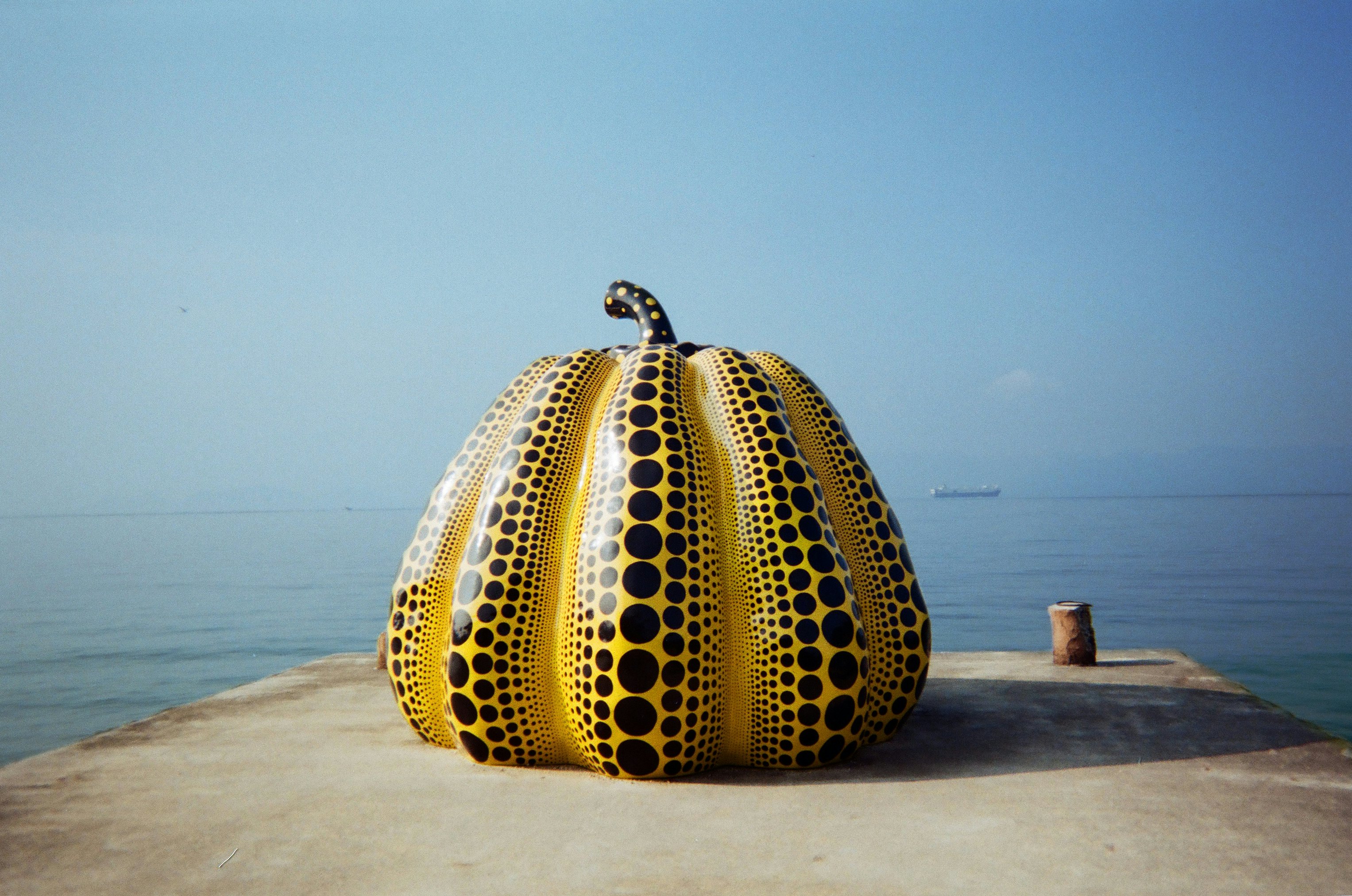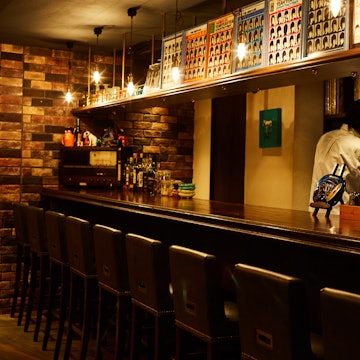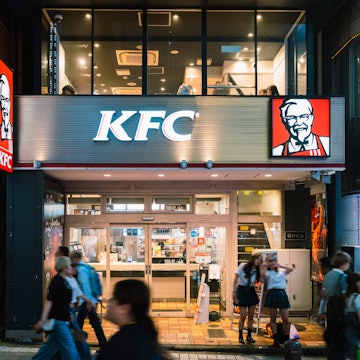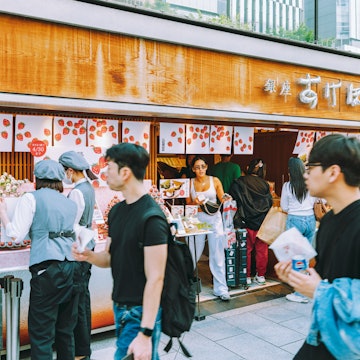
Why Kagawa is the perfect prefecture for sustainable travelers
Sponsored by

Mar 24, 2020 • 6 min read

Friendly and fair-weathered Kagawa is Japan’s smallest prefecture, a relatively undiscovered rural getaway full of spiritual hotspots and world-class art. Its distinctive traditional culinary and cultural practices also make it a perfect option for eco-focused travelers looking for a sustainable trip.
Located in Shikoku, the smallest of Japan’s four main islands, Kagawa is decidedly off the country's usual tourist track. In recent years it’s been enjoying increased popularity thanks to a burgeoning contemporary arts scene that has revitalized island communities, however the prefecture is still very much traditional at heart. Authentic skills are passed down from generation to generation here, and independent businesses are working to revive almost-forgotten crafts.

Community-transforming art
Kagawa's most famous artistic location is Naoshima, an island which has been transformed from a dwindling fishing community into a world-famous art hub. Galleries, outdoor installations and sculptures are dotted along the picturesque coast and further inland amongst the tranquil forest. These include the Chichū Art Museum, the Benesse House Museum, and the iconic Yellow Pumpkin.
Becoming an ‘art island’ has completely rejuvenated the area, attracting tourists from across Japan and abroad, as well as the development of further creative projects. One of these is the Art House Project, which reuses existing space by giving over abandoned houses and other buildings to artists. They have mostly kept the traditional exteriors intact, but converted the interiors into imaginative wonderlands for visitors to explore – often with input and inspiration from local residents. Highlights include Minamidera, an installation on the site of an old temple which plays with perceptions of light and darkness, and Go’o Shrine, which has restored an old Shinto shrine with an optical glass staircase and underground chamber, symbolically linking heaven and earth.
Naoshima is not the only island in Kagawa to have received an artistic makeover. Nearby Teshima also has a number of interesting sites to explore, including the Teshima Art Museum and Teshima Yokoo House. The latter is another renovated property, which features a colorful, modern take on a traditional Japanese rock garden which local residents helped to create.
You may also like: Get a taste of Kagawa, the udon capital of Japan
Traditional culinary delicacies
Shōdoshima, one of Kagawa’s other scenic islands, is better known for its culinary traditions than its artistic ones. However, its foodie credentials are helping to rejuvenate it in much the same way.
Local breweries have been producing soy sauce here for over 400 years, and unlike larger companies most still use the traditional methods. This means using natural flavors instead of additives, and maturing the sauce in wooden barrels known as kioke. Not only can these barrels last for over 100 years, the microbes naturally present in the wood assist with the fermentation process. Although it takes longer, this method is believed to result in a superior quality product.
Unfortunately kioke-making is a dying art, with few craftspeople left with the skills to create them. In an attempt to counter this, local brewers are taking up the challenge to not only learn the craft themselves but also continue to spread the knowledge by teaching younger generations. Visitors to Shōdoshima can tour the Marukin Soy Sauce Museum to find out more about making this most quintessential of Japanese products. The gift shop has plenty of different varieties you can buy to support the local industry, as well as surprising, umami-rich soy sauce ice cream to try.

As a result of its location in the Seto Inland Sea – which is prized for its mineral-rich water – Shōdoshima also has a tradition of salt making. Although the industry all but died out when it was nationalized, there is now a new generation of artisan salt makers hoping to revive it. One such producer, Toshiki Kaba, has come up with an updated version of the original method which uses solar power and recycled wood to make his craft as sustainable as possible. The final product is a fluffy and delicately flavorful sea salt that’s worlds away from average table salt.
Thanks to the island’s favorable, Mediterranean-like climate, Shōdoshima’s other claim to fame is as the birthplace of olive cultivation in Japan. As well as enjoying the olives and related products like olive oil themselves, diners can also try Olive Beef , Olive Pork, and Olive Yellowtail from animals given feed infused with leftover olive leaves as a way to reduce the waste.
You may also like: Island-hopping by bike around Japan’s Seto Inland Sea

Inherently sustainable crafts
Souvenirs make a great reminder of your trip, and all the more so when they’re locally-made arts and crafts that support independent businesses in the region. Japan produces a number of traditional crafts that are inherently sustainable – not least because of the aesthetic of wabi-sabi, which finds beauty in simplicity and imperfection – and Kagawa is no exception.
Marugame city in the west of Kagawa produces about 90% of the country’s uchiwa round paper fans. These date back to the Edo period (1603-1868) and are created from a single piece of bamboo, painstakingly cut and carved into shape before being covered with thin paper or silk. The Uchiwa-no-Minato museum has displays and demonstrations for those who want to find out more, and for a small fee you can attend a workshop and make your very own fan to take home. In addition to being beautiful to look at, they’re helpful for keeping cool if you're visiting during Japan’s hot summer months.

Kagawa is also one of Japan’s leading producers of bonsai trees, particularly the Kinashi and Kokubunji districts of Takamatsu city. There are around 60 bonsai growers here, who lovingly nurture each tree by hand. Head to the Ritsurin Kōen landscape garden to see them and many other types of Japanese plants in the best possible environment. Rightly considered one of the most beautiful gardens in Japan, it’s a maze of ponds, bridges, hills and seasonal flowers, complete with a tea house where you can sit back and contemplate the view in peace.
Another notable craft from Kagawa is lacquerware, an industry which thrived due to the support of local lords during the Edo period. The traditional techniques from this era are still used today, and taught to successive generations at the Kagawa Urushi Lacquerware Institute. They focus on three distinct techniques – choshitsu, kinma and zonsei – which each result in different styles of lacquer. You can find these elegant and intricate designs on wide variety of products, from chopsticks and tea utensils to decorative boxes, any of which will make a beautiful and authentic memento of your stay in Kagawa.
Produced by Lonely Planet for Kagawa Prefecture Government. All editorial views are those of Lonely Planet alone and reflect our policy of editorial independence and impartiality.
Get more travel inspiration, tips and exclusive offers sent straight to your inbox with our weekly newsletter. Make the most of your travel with sightseeing tours and activities from our trusted partners.
Sponsored by Kagawa Prefecture
As a travel entertainment and inspirational media outlet, we sometimes incorporate brand sponsors into our efforts. This activity is clearly labeled across our platforms.
This story was crafted collaboratively between Kagawa Prefecture and Lonely Planet. Both parties provided research and curated content to produce this story. We disclose when information isn’t ours.
With sponsored content, both Lonely Planet and our brand partners have specific responsibilities:
-
Brand partner
Determines the concept, provides briefing, research material, and may provide feedback.
-
Lonely Planet
We provide expertise, firsthand insights, and verify with third-party sources when needed.













